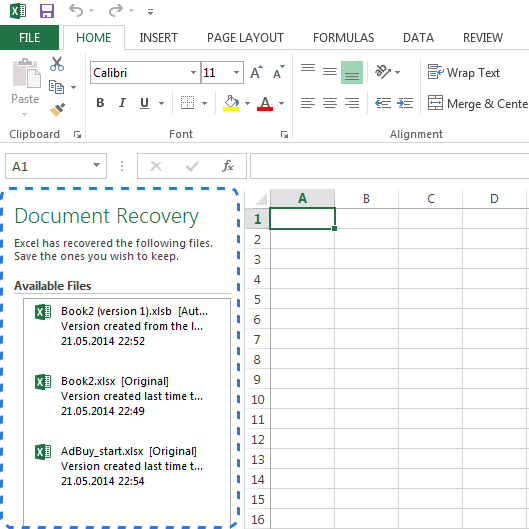The 6-Minute Rule for Excel Links Not Working
Wiki Article
See This Report about Excel Links Not Working
Table of ContentsGet This Report on Excel Links Not Working6 Easy Facts About Excel Links Not Working ShownThe Only Guide for Excel Links Not WorkingExcel Links Not Working for DummiesExcel Links Not Working Fundamentals Explained

Selection estimation functions like either can not manage entire column referrals or determine all the cells in the column. User-defined features don't immediately acknowledge the last-used row in the column and also, as a result, frequently calculate whole column recommendations inefficiently. It is very easy to program user-defined features so that they acknowledge the last-used row.

The Definitive Guide for Excel Links Not Working
Making use of the formula for a dynamic variety is generally more effective to the formula because has the negative aspect of being an unpredictable feature that will be calculated at every recalculation. Performance decreases because the function inside the vibrant range formula should take a look at numerous rows. You can decrease this performance decrease by saving the component of the formula in a separate cell or defined name, and afterwards referring to the cell or name in the dynamic range: Counts!z1=COUNTA(Sheet1!$A:$A) Offset, Dynamic, Variety=OFFSET(Sheet1!$A$ 1,0,0, Counts!$Z$ 1,1) Index, Dynamic, Range=Sheet1!$A$ 1: INDEX(Sheet1!$A:$A, Counts!$Z$ 1+ROW(Sheet1!$A$ 1) - 1,1) You can likewise make use of functions such as to construct dynamic arrays, however is unpredictable and also constantly calculates single-threaded.
Using numerous dynamic varieties within a solitary column calls for special-purpose checking functions. Utilizing several dynamic arrays can decrease efficiency. In Workplace 365 variation 1809 and later, Excel's VLOOKUP, HLOOKUP, and suit for exact suit on unsorted information is much faster than in the past when seeking out numerous columns (or rows with HLOOKUP) from the very same table range.
If you make use of the exact match choice, the estimation time for the feature is proportional to the number of cells checked before a suit is discovered. Lookup time making use of the approximate match choices of,, as well as on arranged data is fast and is not dramatically raised by the size of the range you are looking up.
The Excel Links Not Working Diaries
Make certain that you comprehend the match-type and also range-lookup choices try this in,, and. The complying with code example shows the syntax for the feature. For more details, see the Suit approach of the Worksheet, Function item. SUIT(lookup value, lookup variety, matchtype) returns the biggest match less than or equal to the lookup value when the lookup selection is sorted ascending (approximate suit) (excel links not working).The default choice is approximate match sorted ascending. demands a precise match and presumes that the information is not arranged. returns the smallest suit more than or equivalent to the lookup value if the lookup selection is sorted coming down (approximate match). The complying with code example shows the syntax for the and also features.
VLOOKUP(lookup worth, table variety, col index num, range-lookup) HLOOKUP(lookup worth, table range, row index num, range-lookup) returns the biggest match much less than or equivalent to the lookup value (approximate match). This is the default alternative. Table range have to be sorted ascending. demands a precise match and presumes the information is not sorted.
The Ultimate Guide To Excel Links Not Working
If your information is arranged, yet you desire a precise suit, see Usage two lookups for arranged data with missing out on values. Attempt making use of the as well as operates rather of. Although is slightly faster (around 5 percent quicker), less complex, and uses less memory than a combination of as well as, or, the added adaptability that and offer frequently allows you to substantially save time.
The function is quick and is a non-volatile function, which quickens recalculation. The function is additionally quickly; nevertheless, it is an unstable function, and it often dramatically increases the time taken to refine the estimation chain. It's simple to convert to and. The complying with two declarations return the same solution: VLOOKUP(A1, Information!$A$ 2:$F$ 1000,3, False) INDEX(Information!$A$ 2:$F$ 1000, SUIT(A1,$A$ 1:$A$ 1000,0),3) Because article source exact match lookups can be slow, think about the complying with alternatives for boosting performance: Use one worksheet.
When you can, the information first (is quick), and use approximate match. When you must make use of an exact match lookup, restrict the series of cells to be scanned to a minimum. Usage tables and also organized references or dynamic range names instead than referring to a lot of rows or columns.
Top Guidelines Of Excel Links Not Working
Two approximate suits are substantially faster than one precise suit for a lookup over greater than a few rows. (The breakeven factor has to do with 10-20 rows.) If you can arrange your data yet still can not utilize approximate match due to the fact that you can not make certain that the worth you are seeking out exists in the lookup range, you can use this formula: IF(VLOOKUP(lookup_val, lookup_array,1, Real)=lookup_val, _ VLOOKUP(lookup_val, lookup_array, column, True), "notexist") The initial component of the formula works by doing an approximate lookup on the lookup column itself.VLOOKUP(lookup_val, lookup_array, column, Real) If the solution from the lookup column did not match the lookup value, you have a missing value, and the formula returns "notexist". Understand that if you search for a worth smaller sized than the smallest worth in the list, you receive an error. You can manage this mistake by using, or by adding a small examination worth to the listing.
Beginning with Excel 2007, you can use the function, which is both easy as well as rapid. IF IFERROR(VLOOKUP(lookupval, table, 2 FALSE),0) In earlier versions, a basic however sluggish way is to utilize a function click site that has 2 lookups. IF(ISNA(VLOOKUP(lookupval, table,2, FALSE)),0, _ VLOOKUP(lookupval, table,2, FALSE)) You can stay clear of the dual specific lookup if you utilize exact once, store the cause a cell, and afterwards check the outcome prior to doing an.
Report this wiki page